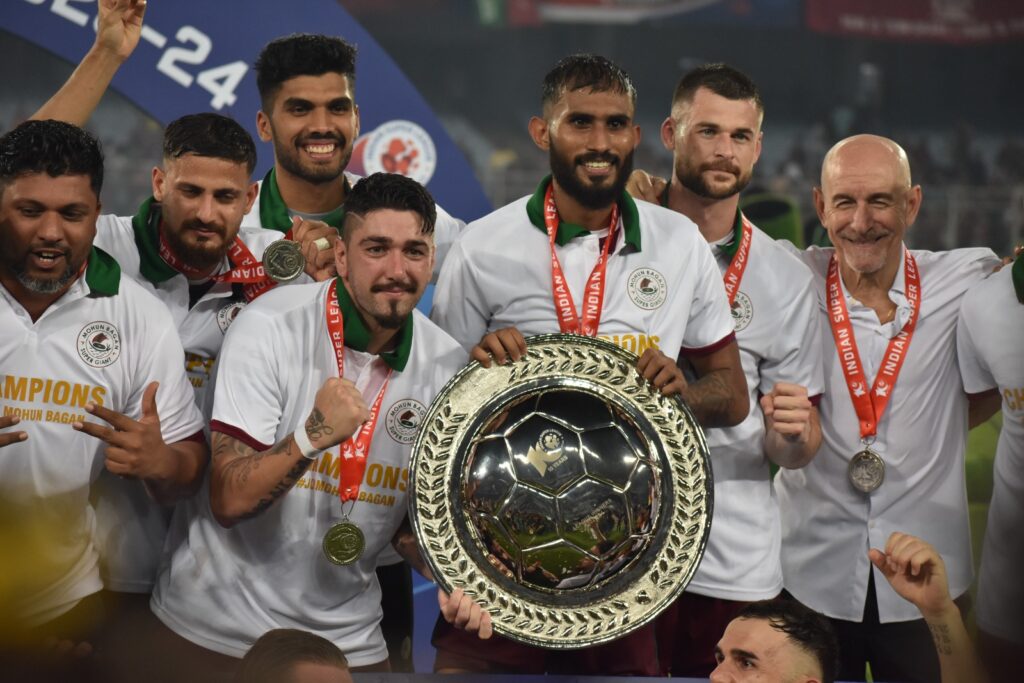
It’s over, but not over yet. Although the winners have been identified and rewarded, there could be another victor, because one part of the competition is still not completed.
Followers of the Indian Super League (ISL) are familiar with this complicated scenario. The country’s premier football competition has a first prize for the toppers of the league phase, which is the ISL Shield. The winners of the knockout phase, involving the top six teams on the league table, get the ISL trophy. This is how it has been the last few years. Nothing new about it.
New this season and somewhat strange is the arrangement by which the ISL trophy winners do not qualify for Asian competitions. The ISL Shield winners — Mohun Bagan SG — qualify for the AFC Champions League 2 (second tier of Asian club football). The Super Cup champions — East Bengal — make it to the qualifiers of the same competition.
Until last season, the ISL trophy winners used to get entry to the AFC Cup qualifiers, for clubs those do not qualify for the Champions League. This slot no longer belongs to India, which means the ISL trophy winners will receive the silverware along with a prize of Rs 6 crore. Bagging it will not ensure passage to continental events.
This makes the ISL winners an odd entity. In club football systems the world over, the winners of the league earn the right to compete in the continental competitions. Under the new rule, the winners of the ISL final between Mohun Bagan and Mumbai City FC on May 4 will go nowhere for winning that game, making it a less prestigious and insignificant affair except for the money involved.
This leads to the question whether the knockout phase of the ISL becomes meaningless. There were 12 teams toiling for seven months, after which Mohun Bagan topped the table. Does it make sense to have the knockouts after that, in this heat, with no reward in the form of a chance to play at a higher level? Why make them sweat without offering this incentive?
There is a reason. To make the ISL acceptable for broadcasters and sponsors and to bring it on a par with better leagues in terms of volume, a minimum number of matches is necessary. Most other leagues have 18 or 20 teams or thereabouts, while the ISL will have 13 next season. To make up for this shortfall, the knockout fixtures are handy additions.
But there is a problem if this is the only reason. As it is, one competition having two winners — although it’s possible that one team wins both the ISL Shield and trophy — is not a very pleasant idea. It dilutes the importance of both titles and causes bragging-rights problems. Who are the champions of India? The ISL Shield winners or those who win the ISL trophy?
For the Latest Sports News: Click Here

Given that the ISL Shield winners will represent the country in Champions League 2 and the trophy winners will prepare for another season of the domestic grind, it’s clear that the former – Mohun Bagan, in this case – is the premier club of India. So why extend the league by giving it a knockout twist and having those matches after the Shield has already been won by one team just for the sake of numbers?
About to complete a decade and bigger and longer, the ISL is unquestionably the country’s top competition. It has brought to India coaches from developed football systems and some quality foreign players have found this league worth playing in. Indian football is in the process of an image makeover and although not internationally, it has got a facelift at the domestic level.
Complicating the dynamics of the ISL by dividing it into two parts to cater to two different interests may not be the best way to prioritise and popularise the competition. Such a vast and qualitative difference between rewards in the same competition is an anomaly, leading to imbalance. Finding a solution to this will do no harm to ISL’s growing reputation as a destination.
Also Read: Legacy Tifo: Mohun Bagan Fans Celebrate Icons, Petratos’ Rise



